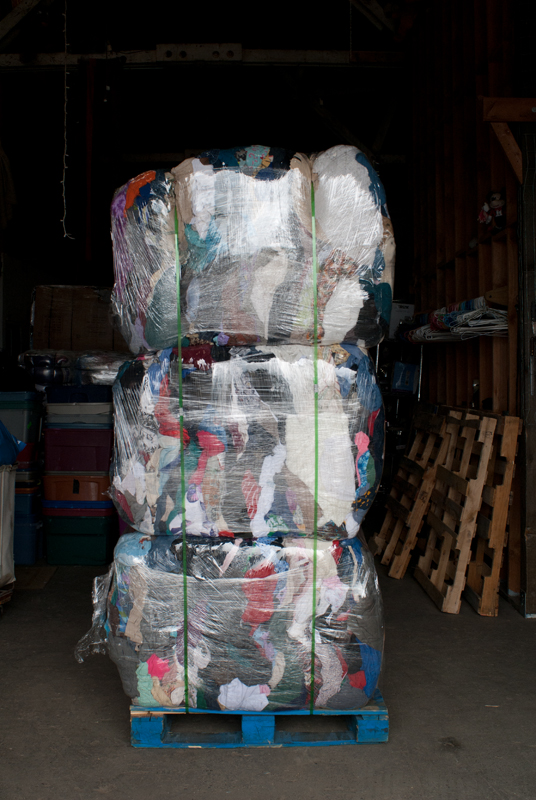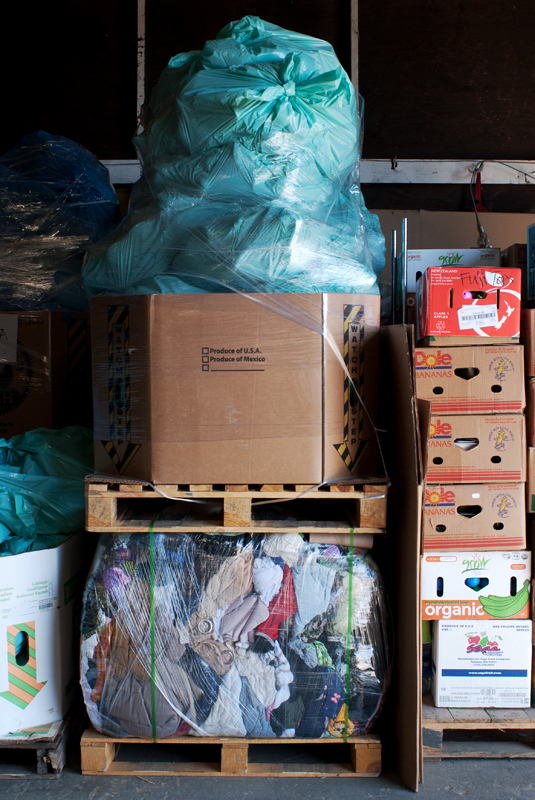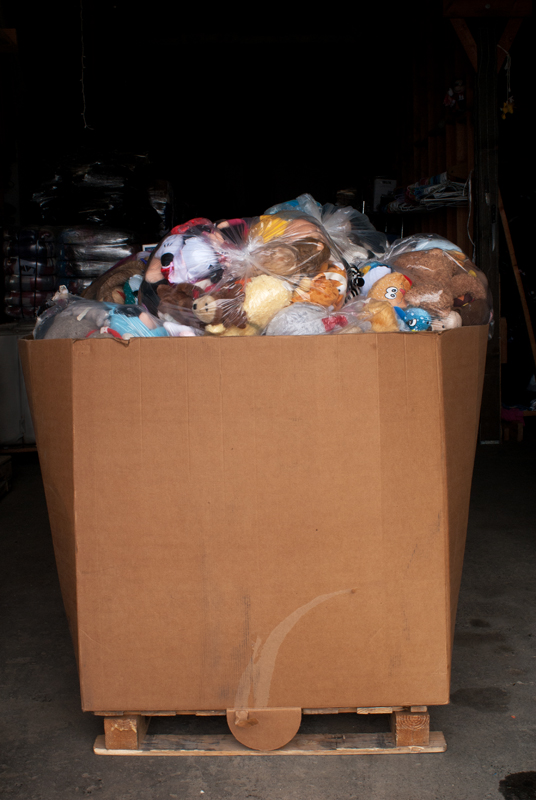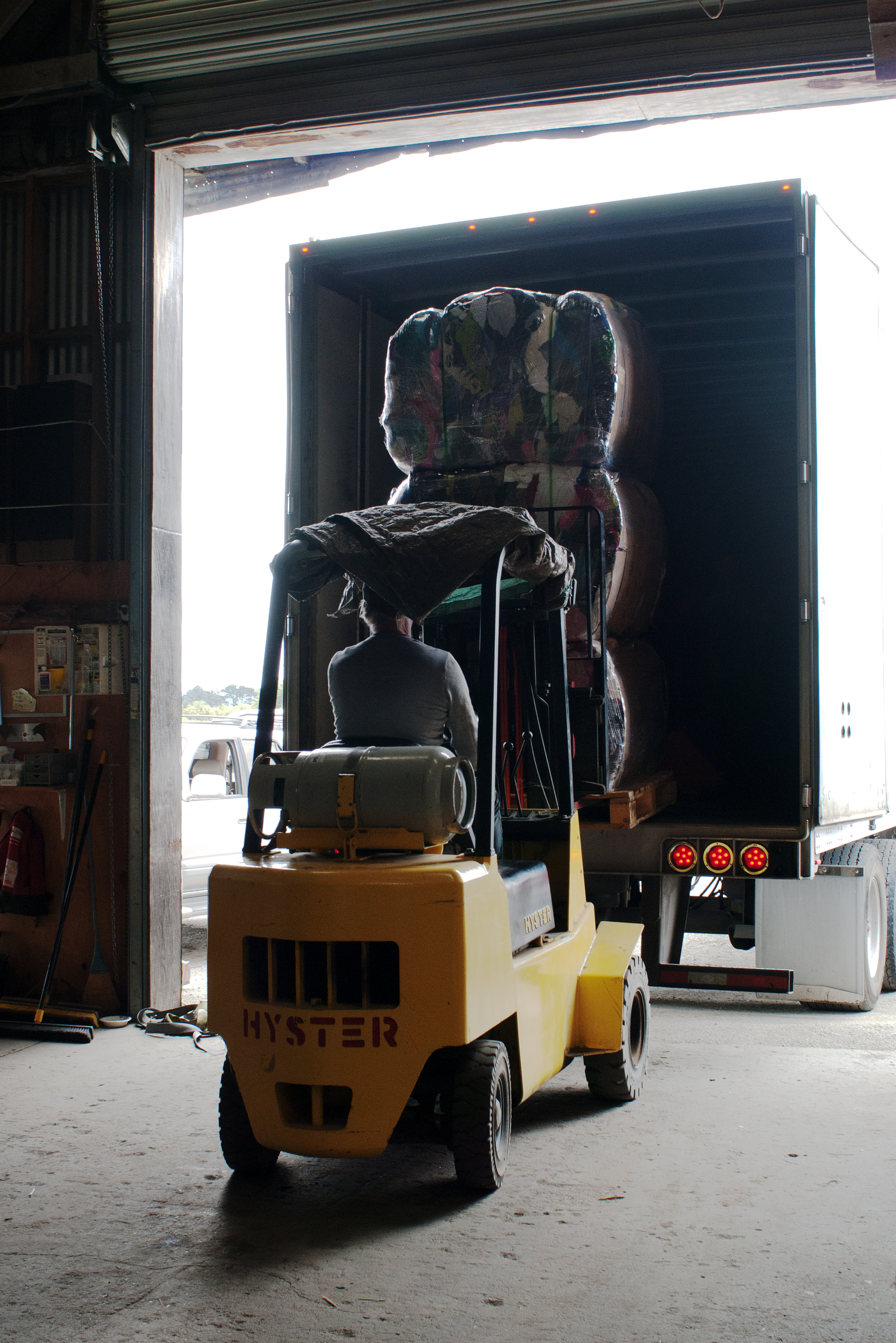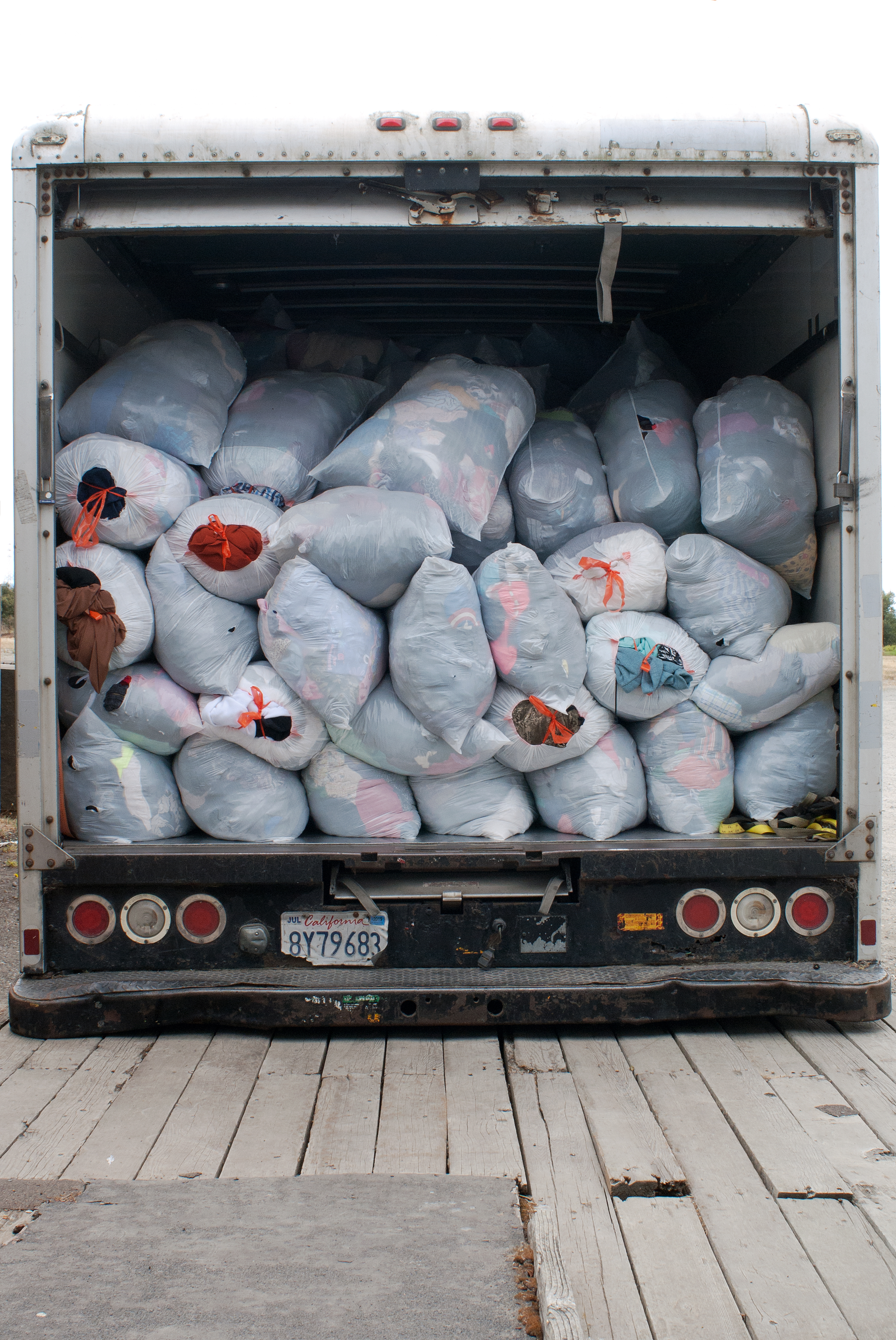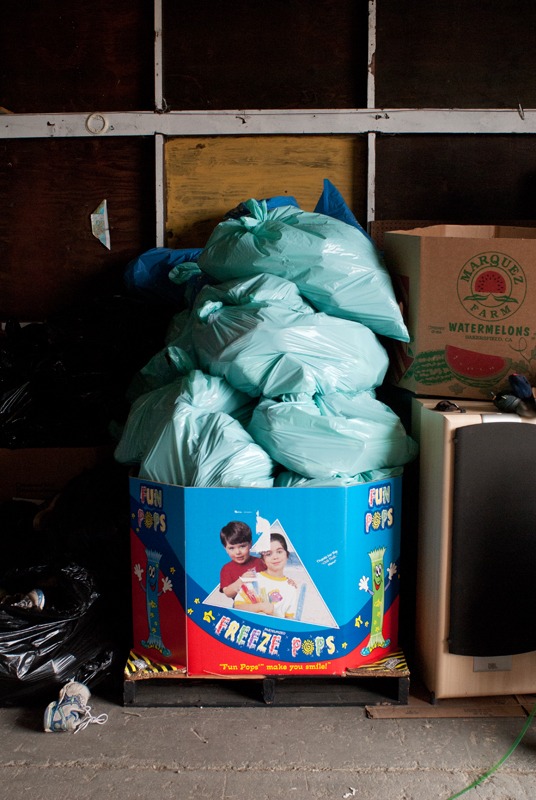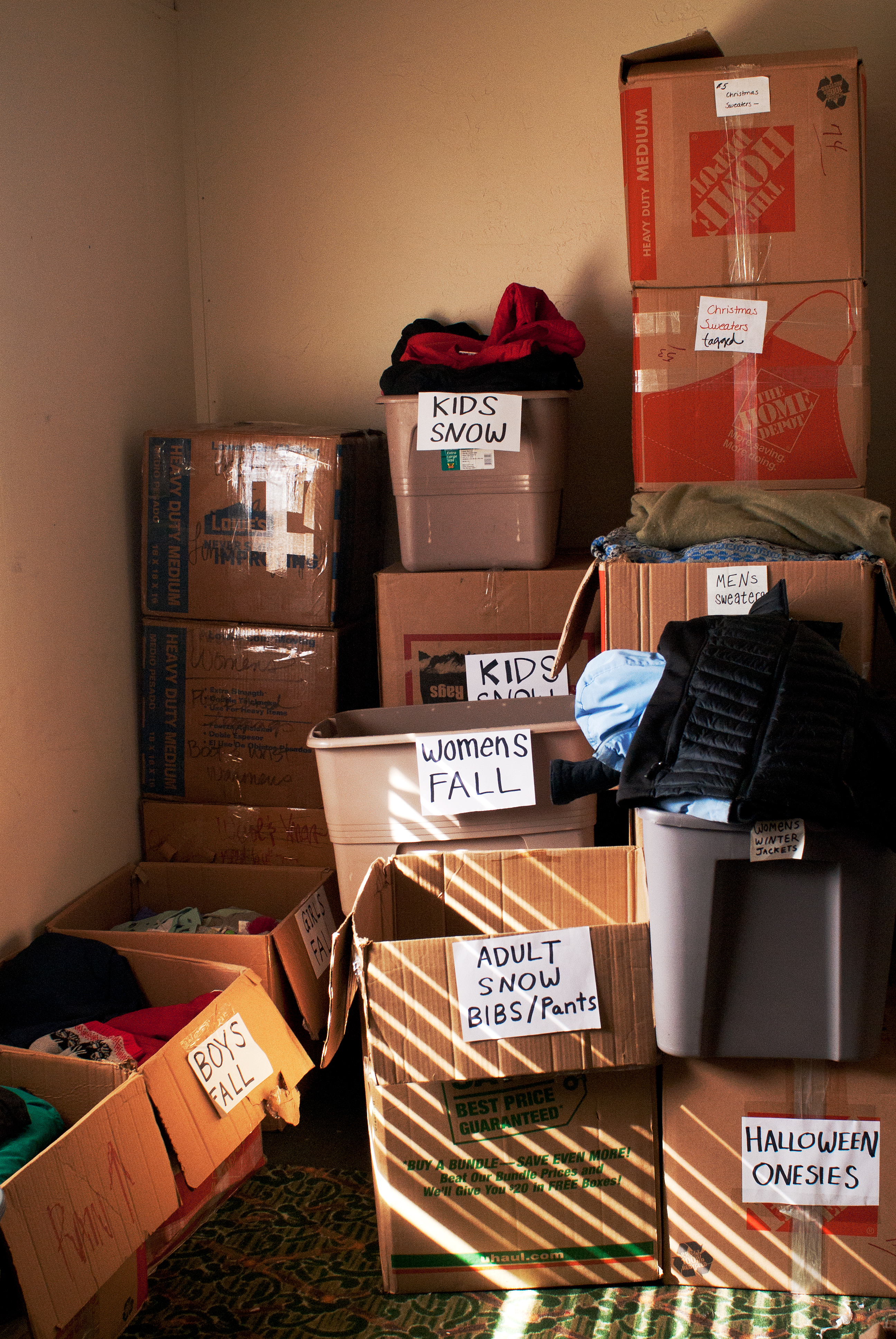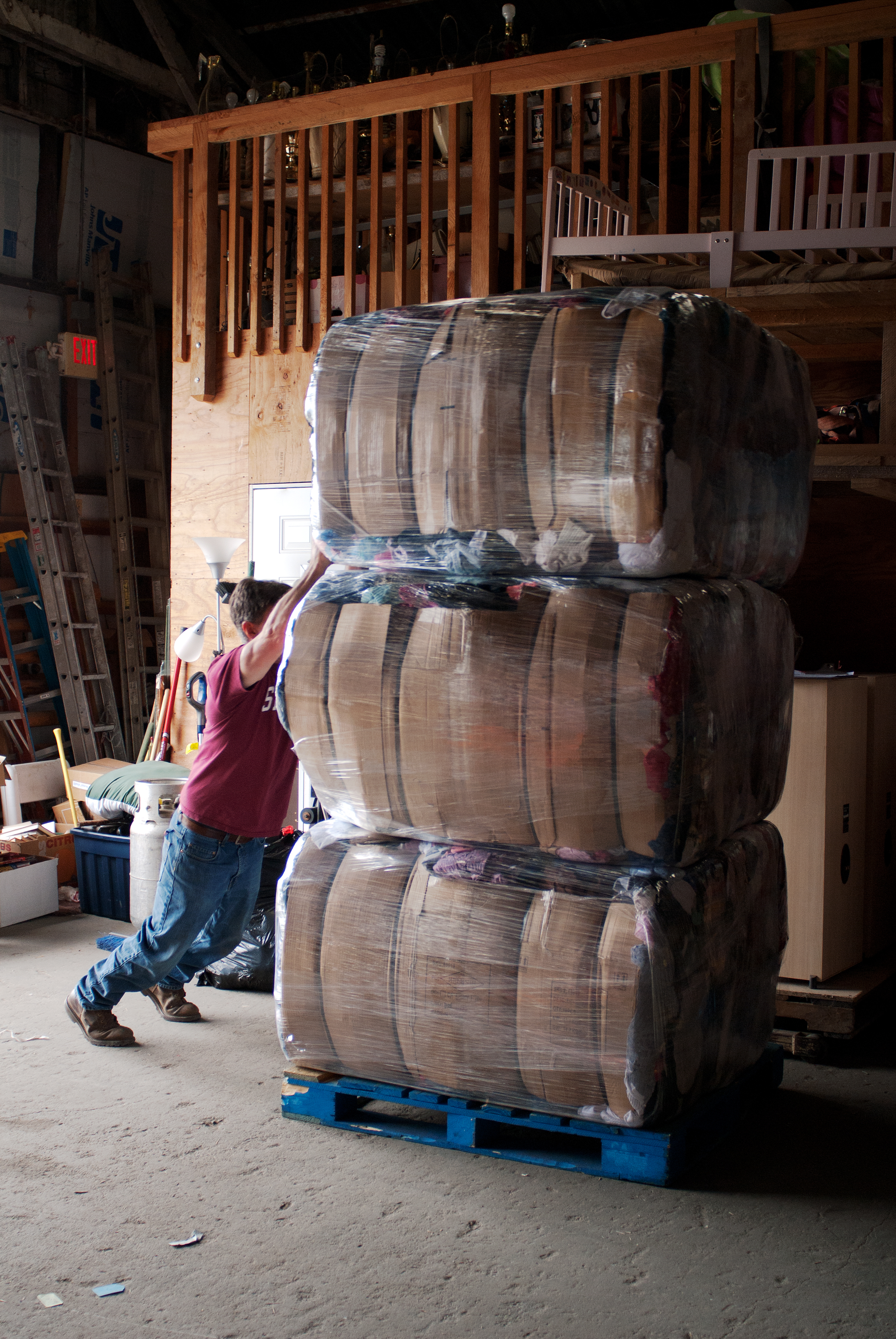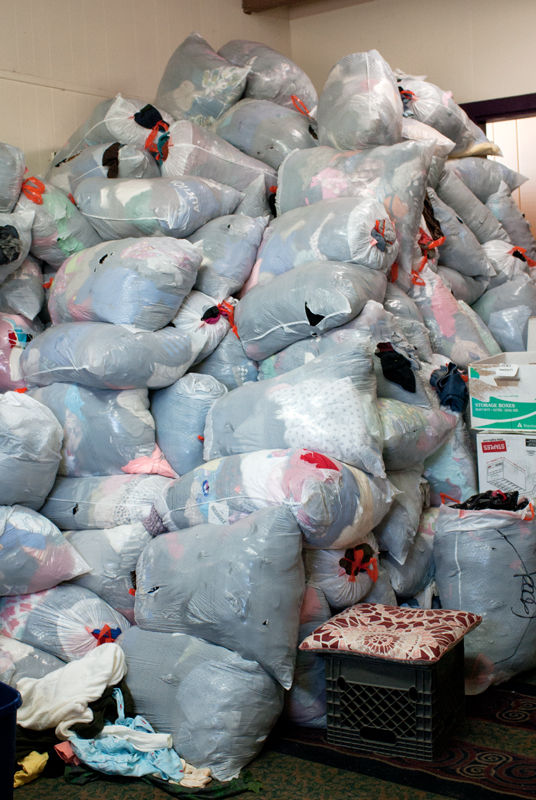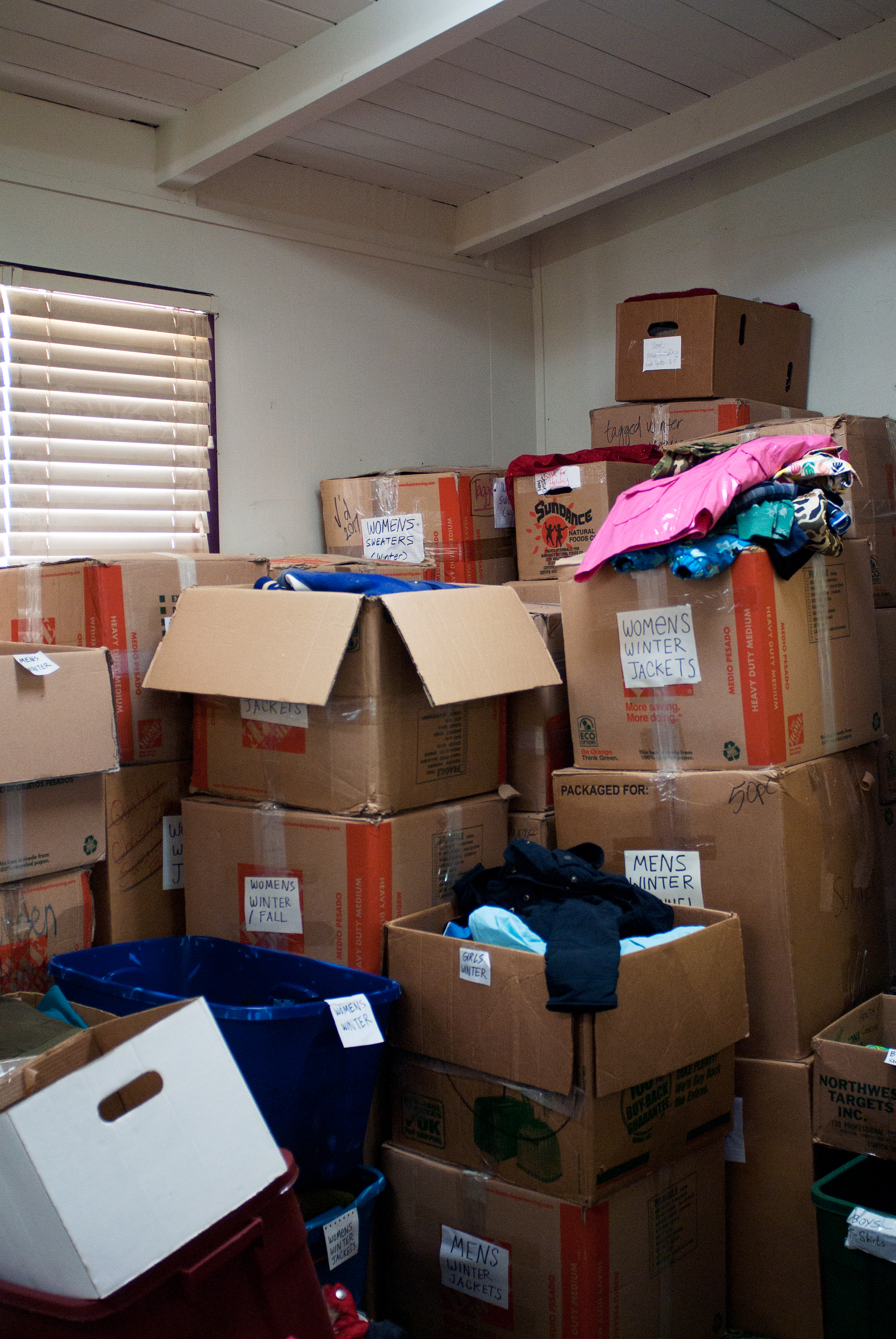Abundace/Surplus
In the US the majority of clothing and usable goods donated to thrift stores cannot all be sold locally due to the discrepancy between the exponential amount of new clothing produced each year, the relatively small market demand for used items compared to the amount of items donated, and the relatively high standards of the American second hand shopper. The amount of money, labor and infrastructure it takes to redistribute the nonstop stream of discarded goods means that in many places around the country, the worn, the stained, the ugly and out of fashion, yet still usable things, often simply end up in the landfill.
Textiles recycling is the process of baling this surplus clothing and shipping it out of the area so it can possibly be used again somewhere there is more demand. This process is usually done by corporate thrift stores in large cities, and is somewhat akin to the trash and recycling systems city municipalities run. It is a labor intensive process, every item taken in has to be sorted, packed and shipped with heavy machinery. The vast majority of donations never sell, or even make it to the sale floor, and are sold through the global rag resale market, mostly to third world countries. This creates more greenhouse gasses, requires a never ending supply plastic and other packing material, and greatly effects the economies of the places they end up, usually poorer countries. For example: it makes it impossible for local artisans who make their living sewing clothes to compete. And depending on the size of the community it lands in, there might be more in a bale than the local people can use, so it still ends up in a landfill after all the energy spent getting it across the globe.
Since the price of rag fluctuates, the labor to sort as well as the price of shipping is often done at cost, or even a loss, because it is more expensive to send it to a landfill. Whether people’s donations get used again depends not on how much individual things are worth or what kind of condition they’re in, but how expensive and complicated the process of redistributing them is.
Eco Groovy Abundance is a small resale business in Arcata California that also does the textile and usable goods recycling for many Humboldt County thrift stores, which get far more donations than they could ever sell or give away. Eco Groovy ends up diverting about 100,000 pounds of clothing and usable goods each month that used to mostly end up going to the landfill.
I started to photograph the warehouse because it’s an operation so large but so behind the scenes it feels like something no one can really picture. I think people should have an idea of exactly how much stuff our community discards each month. For every item that goes out in a thrift store, there are a hundred things that go directly to the baler. The process of sorting everything that comes in never ends, there are sometimes ceiling high piles of hundreds of garbage bags full of clothes. The piles never get smaller, as soon as one is processed, new donations come in and are piled up again.
One or two full semi trucks are loaded out every month, packed to the brim with thousands of pounds of clothing, shoes, accessories, kitchenware, and toys. To put out every item donated, and to wait for it to sell, would take a large warehouse or building that was several stories, and even if it was all extremely cheap or free, you’d have to continually expand floor space every year because there will never be enough people locally to find a new home for every item.
This is all to say, we need to cherish what we own. We need to use things for their entire lifespan. We need to stop producing new things, and put in the work to redistribute what we already have. We need to move away from relying on for-profit corporate thrift stores doing that work, and create local systems funded by cities and taxpayers the way we do for our trash and recycling so people have a way to get rid of their unwanted things responsibly, and so value is not decided by whether it’s more profitable to throw things away than to store them until a home is found.
I’ll leave you with this wisdom I’ve learned from years of seeing the massive amount of perfectly good stuff humans get rid of: stop buying new things.



